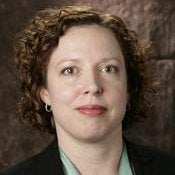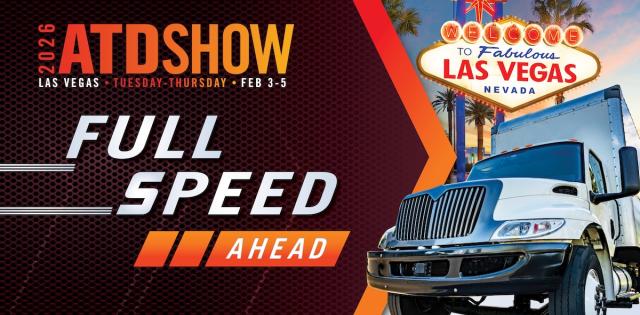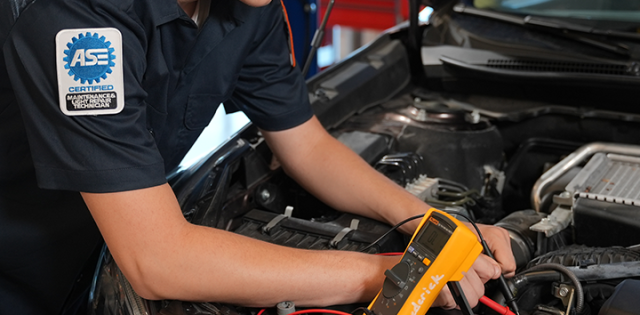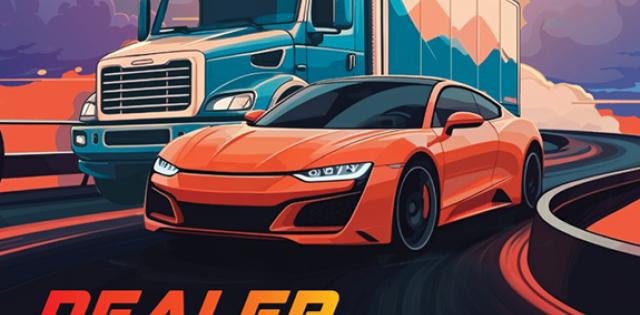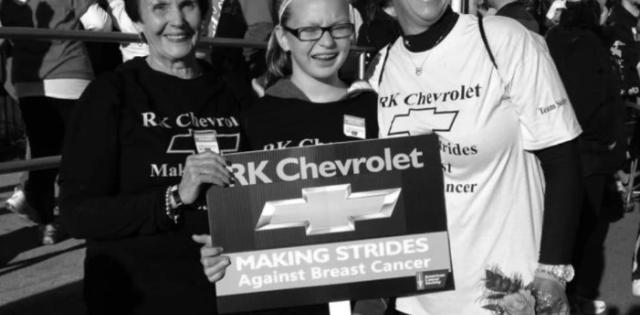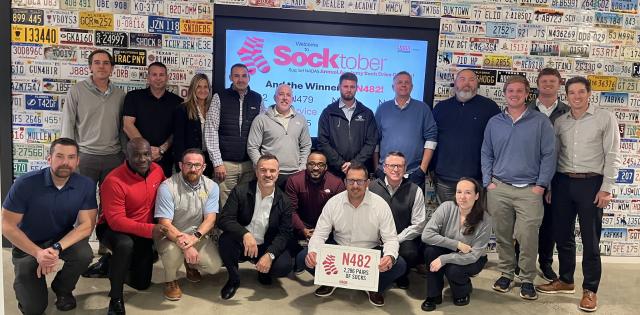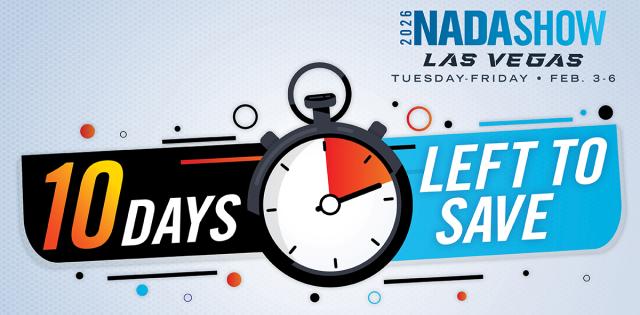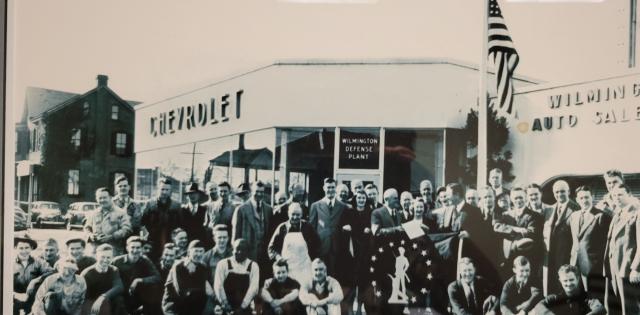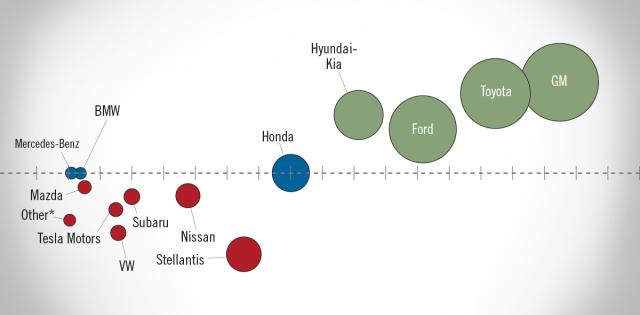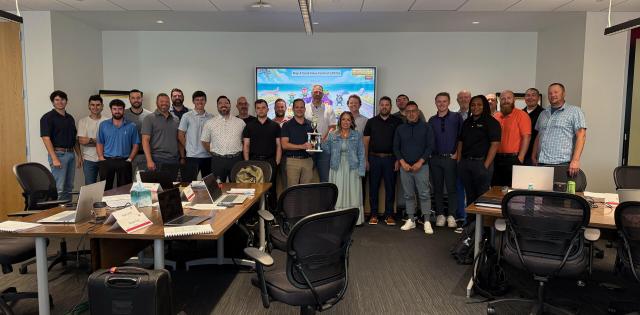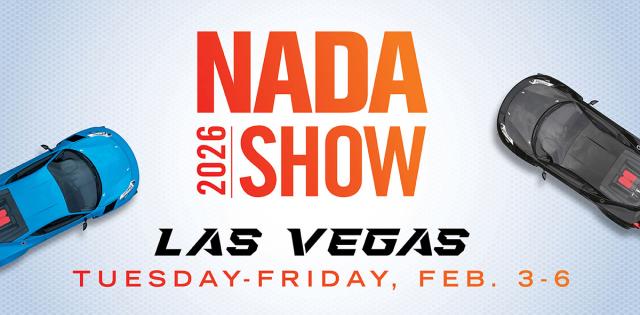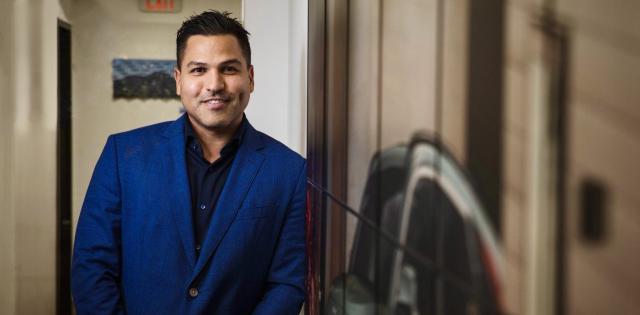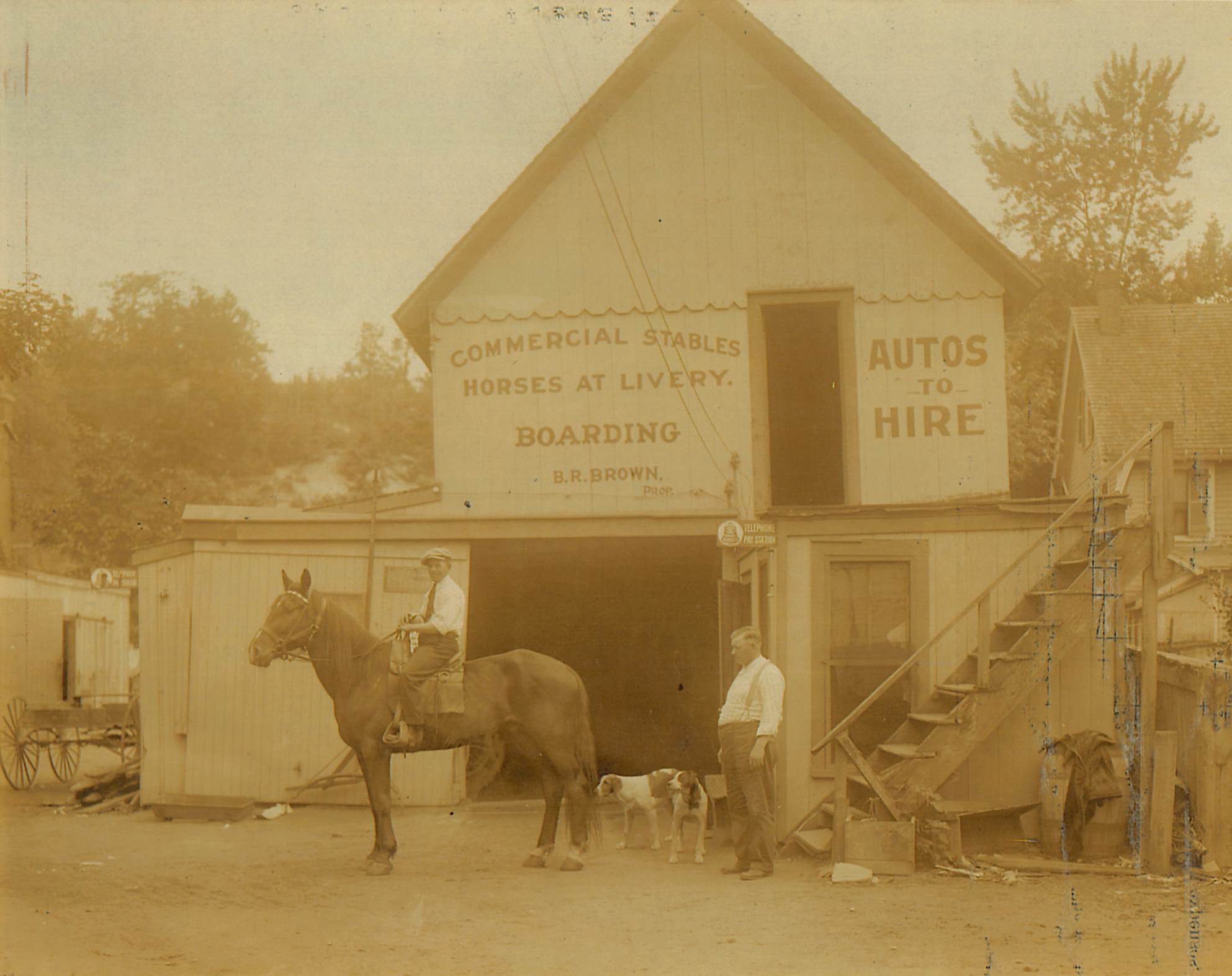
John Storck, Jr., has a photograph of his great-grandfather, Benjamin Brown, taken in the early 1900s. In the photo, Brown—who owned a livery stable in the village of Northport in the township of Huntington, N.Y. —is standing in front of a horse with a customer sitting astride. “I like to joke that he was sending someone out for a test drive,” said Storck Jr., dealer and principal for Huntington Jeep Chrysler Dodge Ram.
On the wall behind Brown and his customer is an advertisement for horses and carriages to rent, but also for automobiles for hire.
Some years after the photo was taken, Brown was kicked by one of his horses and broke his hip, passing away from his injuries. “He was in his 60s, broken hips in those days were often fatal,” Storck Jr. said. “They had his wake in the living room of his house.”
It would seem like an inauspicious beginning for a family auto dealership. But as Storck Jr. will tell you (and, as his own fourth-generation dealership shows), the auto retail industry is all about adaptation and survival of the fittest.
From Whippets to Wagoneers
Storck Jr.’s grandfather, Lewis Scudder, married Brown’s daughter and in 1914, he went to work at J.A. Carson Auto Company, a dealership owned by Jack Carson, selling Whippets and Willys-Knight automobiles. Scudder started off changing oil, working his way up to shop foreman, service manager and general manager.
Whippet production ended in 1931 and Willys-Knight in 1932, so Carson added Hudson automobiles to the lineup, which helped the dealership survive government-imposed car rationing during World War II.
“Hudsons were fast cars with powerful engines,” Storck Jr. explained, which made them popular with police and other emergency personnel. “Jack Carson was tight with the head of the Hudson Motor Company and was able to get Hudsons to sell to police departments and doctors during WWII,” he said. That, along with the dealership’s service business, helped them stay afloat.
When Carson died in 1949, Scudder, along with his son-in-law, John Storck (Storck Jr.’s father), and a third partner (Carson’s son-in-law) bought the business from Carson’s widow. They changed the dealership name to Carson & Scudder “to capitalize on the good will that my grandfather had in the community,” Storck Jr. said. The plan was for Lewis Scudder to be the GM and the other partners would just be investors. John Storck Sr was an insurance company executive in NYC but was tapped by the floor plan source to assume the GM position when the dealership was out of trust within six months of the purchase.
By 1953-1954 Hudson was facing bankruptcy along with the Nash Motor Company. As a solution, these two merged to form the American Motors Corporation with two brand lines–American Motors Nash and American Motors Hudson. Carson & Scudder sold American Motor Hudson cars while a competitor a mile away sold American Motors Nash.
Meanwhile, the owner of the local Willys-Overland dealership ran into financial difficulties and the Willys Overland Co awarded the franchise to Storck Sr., adding Jeeps to the Carson & Scudder lineup.
It turned out to be a very good business decision. In the early 1960s, Jeep came out with the Wagoneer station wagon. With four-wheel drive, automatic transmission and power steering, the Jeep Wagoneer took off. “Suddenly, they were selling a lot of these things,” Storck Jr. said. “They were popular with people who lived in rural, hilly areas and needed four-wheel drive in the winter time, a lot of commercial businesses also bought them.”
The Only Thing Constant Is Change
Storck Jr. originally intended to become a doctor, majoring in biology at Northeastern University in Boston, going to grad school, and working as an operating room technician at Columbia-Presbyterian Hospital in New York City.
“Hospitals are somewhat similar to dealerships,” Storck Jr. said. “It’s a big structure with lots of moving parts and a similar cast of characters. You have the surgeons, who are rather like auto technicians. They’re both trying to help the patient/customer but are often hindered by the insurance carrier. You have the obstetrics department excitement of delivering a baby and the sales floor where you pick up a new car. The emergency rooms and the service department— where you sometimes have to deliver bad news. It’s fulfilling in that people tend to turn to us for advice like they turn to other professionals.”
But owning and running your own business is in the family blood, so Storck Jr. joined the family dealership in 1972. “My father always preached: Own your own business”. He was a child of the Depression and he knew too many people who were out of work,” Storck Jr. said. “The same with my grandfather. He believed that by owning your own business, you controlled your own destiny.”
During his tenure, Storck Jr. has seen the Jeep brand change hands several times. “American Motors got in financial trouble and Renault bought them in the early 1980’s, so we became AMC – Jeep Renault,” he said. “Then Chrysler bought it from Renault, Daimler bought it from Chrysler, and then Cerberus [Capital Management] before the 2009 bankruptcy, and then Fiat bought it from Cerberus. Now we’re Stellantis and we’re back to learning French again.”
Storck Jr., along with his brother and fellow dealer principal, Robert Storck opened their second dealership—Huntington Hyundai—in 1986, and are now a Genesis dealership as well. “When Hyundai came to us in 1986, there were 33 dealers when they started and we were one of them,” Storck Jr. said.
The Storck brothers are also planning ahead for the next generation of leadership at the company. While John Storck Sr. worked right up until his death—"My father was here on July 25, 2000, and died July 26,” —the Storcks are looking ahead to the next generation and are in the process of succession planning. Storck Jr.’s two nephews, Bobby and Tim Storck and his oldest son, John Storck III all have leadership roles within the family businesses.
Through it all, the Storck family has remained steady through change and focused on serving their community. “We have fourth generations of families as customers. Our family physician is the grandson of a very good friend of our father who was also our physician and are among our longest customers.”
Ever the student of biology, Storck Jr. says his family dealership and others like it are an example of Charles Darwin’s study of gene mutations in finches allowing for species survival in changing environmental conditions. “If you think about it: Car companies survive by being able to adapt to changing environmental conditions. My great-grandfather was able to adapt from the horse to the car, and over time we’ve had to adapt by changing brands,” he said.

